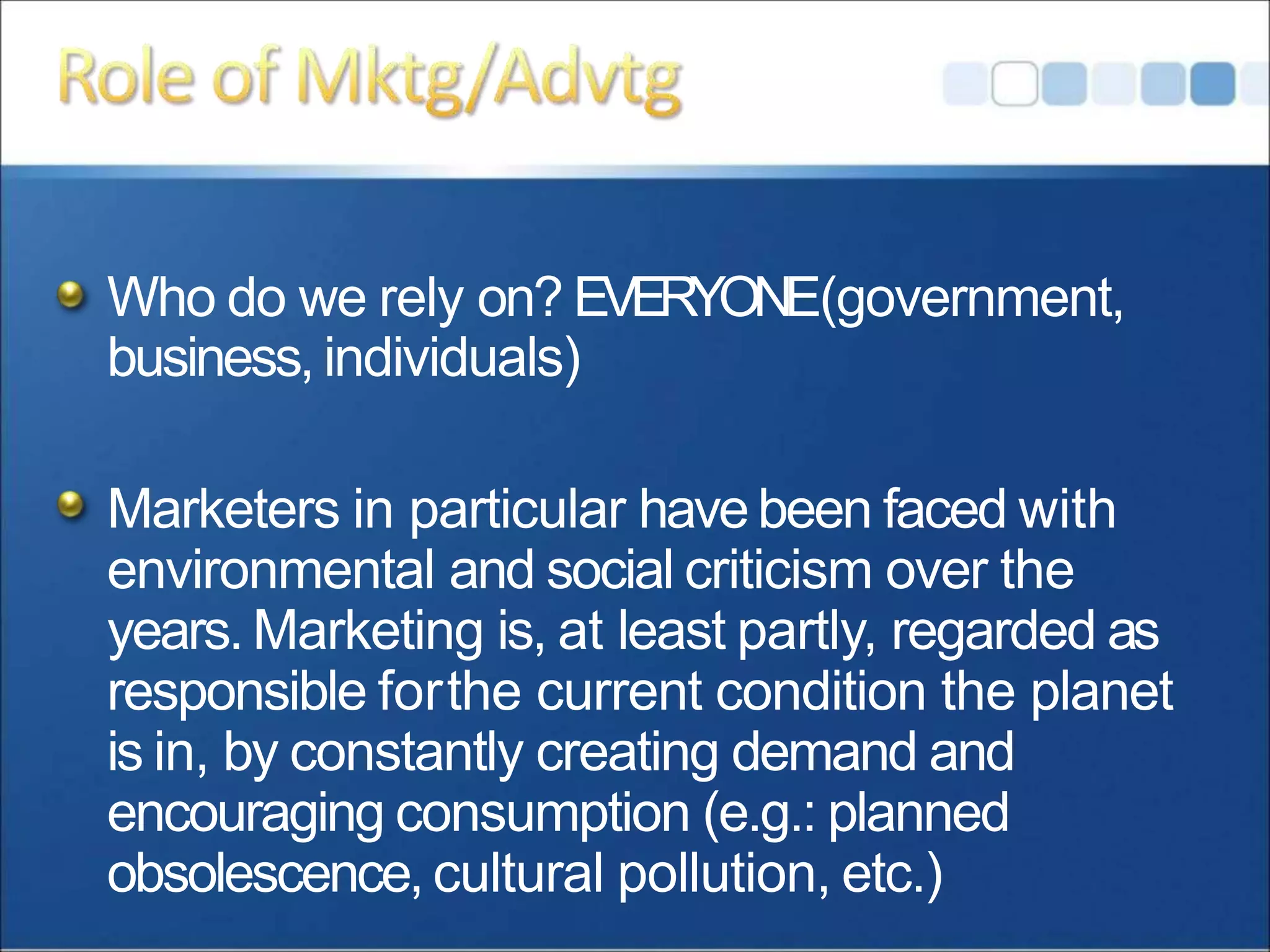This document discusses the unsustainable rate of global population growth and resource consumption and proposes sustainable marketing approaches. It notes that population grew from 1 billion in the 19th century to over 7 billion today, while consumption grows faster than the planet's renewal rates. Conventional marketing is criticized for encouraging overconsumption. Sustainable marketing aims to promote sustainable behaviors and products through segmentation of consumers by willingness and barriers. Examples show appealing to consumer self-interest through benefits, rather than guilt, can better motivate sustainable actions.




















